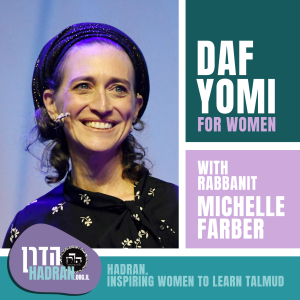
Study Guide Shekalim 3
Today's Daf is sponsored by Jill Shames in memory of her mother, and teacher, Seena Baker, שפרה בת זאלה וברכה on her yahrzeit. "Mom, thank you for the love of learning you instilled in us and in so many, many others over the years." And by Josh Wilkenfeld "in honor of the Chevy Chase Parking Lot Hashkamah Minyan for providing a quality and efficient davening experience during these challenging times."
The gemara describes the need for the preparations they would do from mid-Adar and how exactly they set up markers on the graves. Originally the courts would send people to uproot diverse kinds if people didn't do it themselves. But over time, they changed their policy. How and why? Ultimately, they would make the fields hefker, ownerless. How did that resolve the issue? From where do we learn that the courts have the right to declare someone's possessions to be ownerless? Once they do that, the field is exempt from tithes. Can one declare a leap year in the shmita year or the year after shmita? Why would it be an issue? From the 25th of Adar, if people didn't give the half shekel, the court would take collateral from them. From which groups of people are they not allowed to demand collateral? Are kohanim allowed to give but not obligated or are they obligated? Why did kohanim think that they were not allowed to give the half-shekel? What are the rules regarding children? What is the difference in the law for those who have two hairs but are not yet aged 20 and those who do not yet have two hairs? The gemara brings a discussion between Rabbi Yehuda and the rabbis regarding different approaches to the kohanim and whether or not they are obligated or permitted to bring the half-shekel. Gentiles and Kutim cannot give a half-shekel. What are they allowed to bring to the Temple?
More Episodes
 2024-10-31
2024-10-31
 2024-10-30
2024-10-30
 2024-10-29
2024-10-29
 2024-10-28
2024-10-28
 2024-10-27
2024-10-27
 2024-10-25
2024-10-25
 2024-10-22
2024-10-22
 2024-10-22
2024-10-22
 2024-10-21
2024-10-21
 2024-10-20
2024-10-20
 2024-10-16
2024-10-16
 2024-10-15
2024-10-15
 2024-10-14
2024-10-14
Create your
podcast in
minutes
- Full-featured podcast site
- Unlimited storage and bandwidth
- Comprehensive podcast stats
- Distribute to Apple Podcasts, Spotify, and more
- Make money with your podcast
It is Free
- Privacy Policy
- Cookie Policy
- Terms of Use
- Consent Preferences
- Copyright © 2015-2024 Podbean.com





